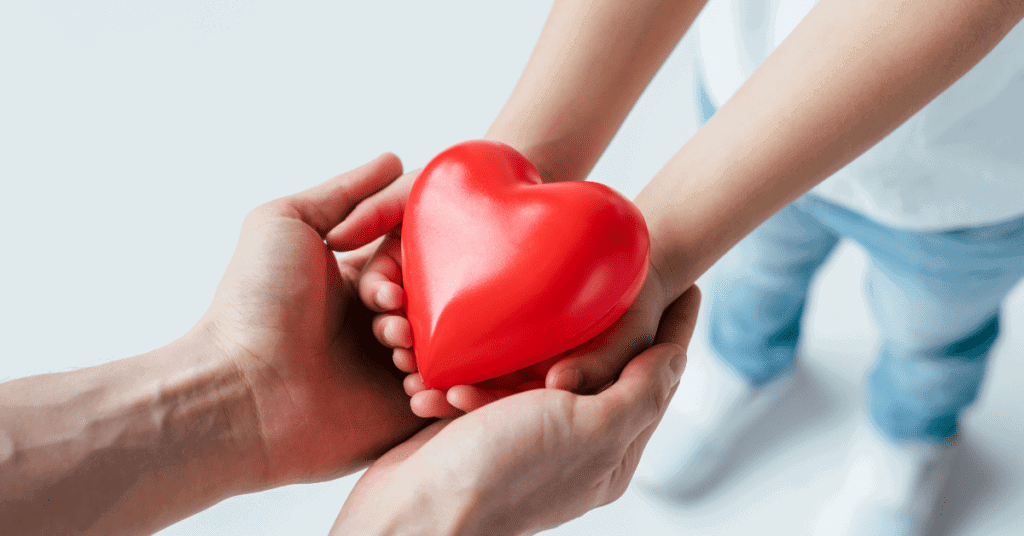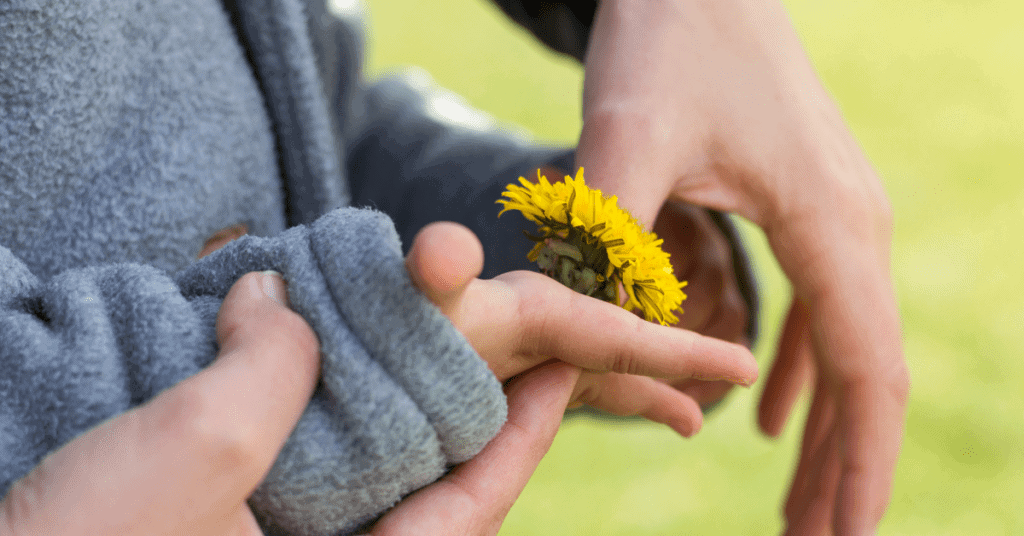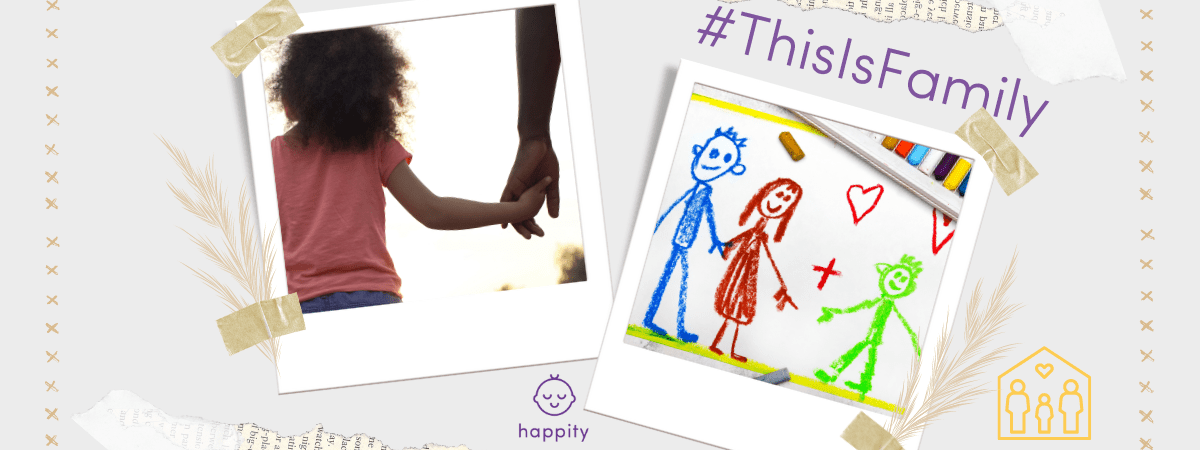The light bulb moment when our son realises he’s safe and loved after experiencing triggers -you can’t wipe that smile off my face. The distance that was created by trauma is healed. It’s a magical moment.
Adoption is a process that a lot of people have heard about. But very few of us are aware of the ins-and-outs of what life is like with an adopted child. Particularly adopting a child with previous trauma.
Justine shares with us her family life and just some of the experiences she’s had after adopting a child with trauma. She has some excellent advice and offers brilliant insight into what it’s like to walk a day in her shoes.
Thank you so much, Justine, for sharing your story with Happity. x
What is your family set up?
We are a family of 3. Me, Justine, my husband and our adopted son.
At early ages me and my husband knew we wanted to adopt. We went through our local authorities adoption service. It took 18 months to get approved then another 3 months to adopt our son.
We went through a series of interviews and training sessions. The interviews consisted of questions about our marriage, childhood, work, how we’d parent etc. It was actually quite therapeutic! And when we finally saw our son for the first time it was a magical moment. I still look back at that time and my heart leaps with excitement.
If you were to describe parenting an adopted child with trauma in one sentence, what would it be?
When parenting an adopted child, get the parenting books and turn them on their head.
One of the differing areas for our family was potty training. Our son potty trained at 4 which in a lot of circles is very late. Due to his trauma his brain hadn’t developed enough to recognise when he needed to go to the toilet. Many traumatised children’s biological steps are out of sync. It’s important to tap into your local adoption network and go with your gut feeling.
One of the other differences, which is rather surprising, is lots of birth parents are not taught about therapeutic parenting. Before our son arrived we had tools to help our son understand and communicate his feelings to us. How to deal with situations like difficult behaviour. When telling parents who gave birth naturally what we learnt they wanted to know more.
If you know any adoptive parents they have a lot of knowledge and worth tapping into if you need advice.

An area with direct opposing advice is managing difficult behaviour. Most healthy disciplines involve a form of time out. Time outs will usually trigger a traumatised child, it reminds them of being on their own and create feelings of shame.
Instead of time out we put our son on ‘reflection time’. One of us will sit next to him for the duration, saying how much we love him, he’s safe and will never let him go. At the end of the time, depending on his mental state, we’ll reflect on what and why the behaviour happened. And if he’s not in a good way, we’ll talk about it later.
What do you wish you’d known before adopting a child with trauma?
Listen to your gut feeling. Social workers, psychotherapists and others who come on your journey will tell you how to parent, what to do, and more. You as their parent(s) know your child. Follow your gut instinct, you love your child and know what is best.
One example, I was recounting a funny story to my sons psychotherapist, my husband pruned the apple tree and our son got upset so he could get some sweets. The psychotherapist did not see the funny side, she explained the pruning of the tree represented the loss he’d experienced in his life.
Suddenly it wasn’t so funny anymore!
This is what I call the trauma trap. When you put everything down to trauma, it is exhausting and takes all the fun away. I find myself drifting in and out of trauma traps on a regular basis. It’s important to be ready for when a trigger is happening, but to attribute every action to trauma is tiring. I much prefer to enjoy my time as a mum.
What bit of advice would you have given yourself on your toughest day?
Look after yourself. Parenting a child who has experienced severe trauma is hard work: you are not failing them by taking time out for yourself. You are doing a great job!
Traumatised children are forced to learn how to survive. They need to experience a safe and loving environment in order to move from survival to living mode. When survival mode is on it’s a pleasure to help my son. After he has moved back into living mode, I feel tired.
I felt bad for wanting time out, as if I was failing my son, or even making him feel it’s his fault. I’ve learnt it’s important to recharge and fill myself up again. Not only for me but also my son will learn the importance of looking after his well-being.
What’s your favourite thing about your family & your experiences of adopting a child with trauma?
The light bulb moment, when our son realises he’s safe and loved after experiencing triggers, you can’t wipe that smile off my face. It’s a magical moment. The distance that was created by trauma is healed.
It’s hard work to get to this point, lots of patience and working through feelings. I see the weight lifted off my sons shoulders. The hard work paid off!

What part of family life are you most looking forward to?
Our family can’t wait for summer!!
We love being outside
whether that’s gardening, running around or cooking over an open fire. We still go out in winter but it’s not the same as summer. Our son helps us harvest fruits, vegetables and herbs. As a family we love to cook, when there’s lots of fresh produce it’s so wonderful to work together creating new dishes.
Roll on summer I say!
Thank you again for sharing your story about adopting a child with previous trauma, Justine. We’d love to hear from you. This Is Family is all about sharing family stories – especially from families who feel like their voices are not often heard. Every family has a unique story to tell. We’d love to hear yours. Find out how you can feature on our blog and get involved. So that other parents can feel less alone.
More from This is family:
Matteo arrived early – my premature baby



0 Comments